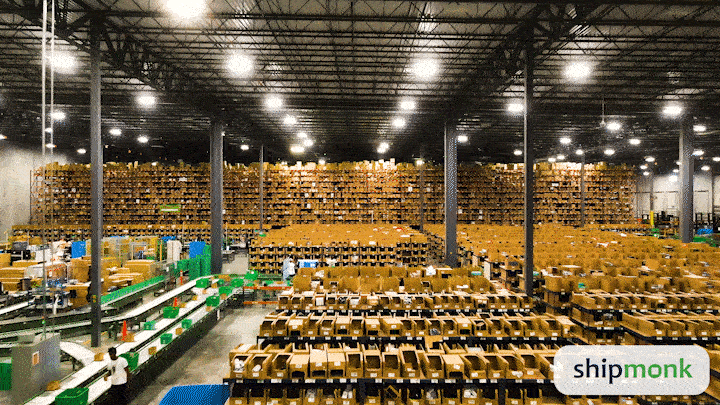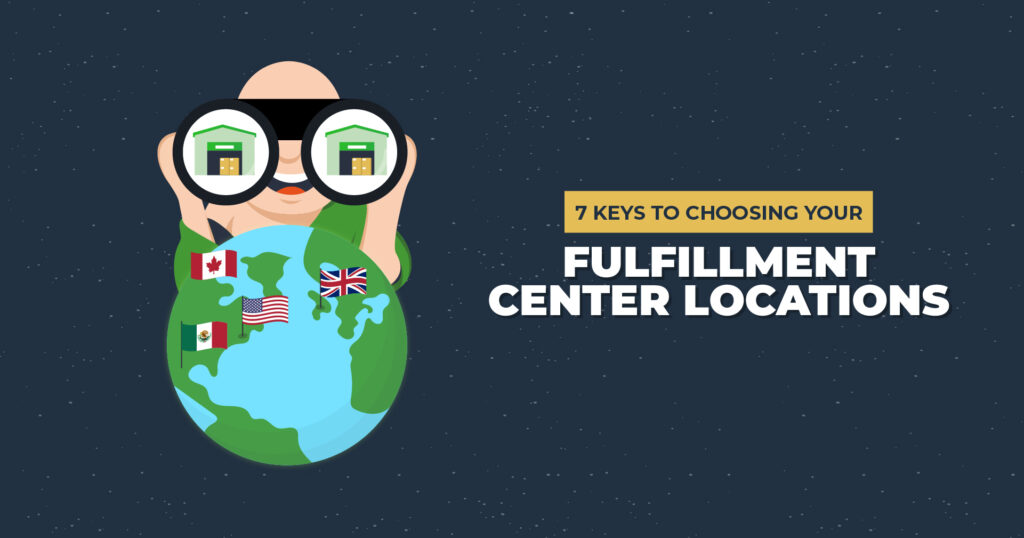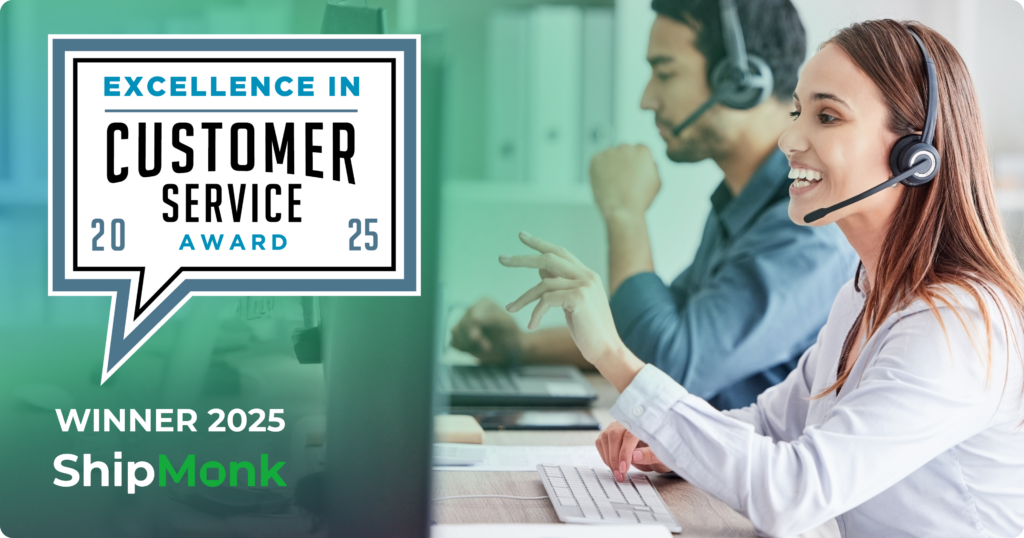Things that customers and ecommerce merchants dislike equally:
- “Where’s my order?” emails
- Expensive shipping
- Lengthy shipping windows
- Customs and tariffs on orders
What is the solution to all these shared issues? Strategically located fulfillment centers.
Once your ecommerce brand has reached significant sales, and you can effectively analyze buyer behavior, it’s time to think about the best ways to disperse your inventory. When you distribute inventory across an array of fulfillment center locations, the benefits are faster and less expensive shipping, more effective inventory management, and happier customers and margins as a result of both.

But ecommerce brands sell all over the world, so how do you decide where in the world to keep warehouse space so orders can be fulfilled faster, everyone is happier, and you avoid the conversion killers bulleted above?
Well, for starters there’s an issue with that question. If you’re an ambitious ecommerce brand owner, you don’t just want more warehouses. Your growing business needs a fulfillment center on your side that will handle the picking, packing, and shipping of your increasing orders while you get out there and develop the broader scope of your brand. In this article, we’ll first discuss the difference between a warehouse vs. fulfillment center. Then, hang on to your hats, because we’re analyzing the seven most important areas to keep in mind when choosing your fulfillment center locations, highlighting how ShipMonk’s 12 state-of-the-art fulfillment centers fulfill those needs!
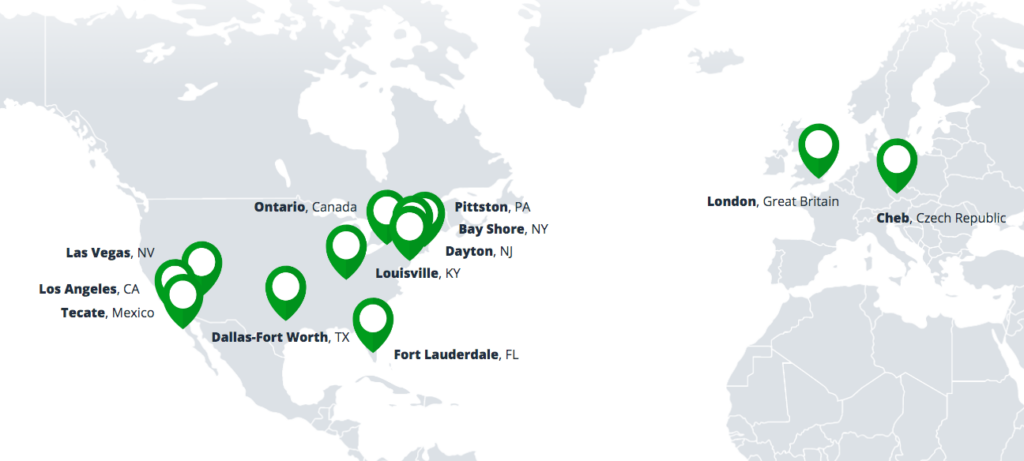
Warehouse vs. Fulfillment Center
If you’re an ecommerce brand that wants to grow and scale, figuring out where to put your inventory is only part of the formula. Before we get into the nitty gritty of key factors to consider when choosing your fulfillment center locations, it’s important to understand how a fulfillment center differs from a traditional warehouse.
Let’s break it down at its most basic level. A warehouse is a place where you can keep inventory. But if you’re an ecommerce brand with aspirations, it’s not enough just to find shelving for your SKUs. You must have a plan for the critical component that comes after that, which is efficiently and consistently getting your products out the door to customers. That’s where a fulfillment center comes in. While a warehouse is a large storage space for holding your inventory, a fulfillment center like ShipMonk stores, picks, packs, and ships your ordered goods to customers.
A fulfillment center is the heart of a 3PL (third-party logistics) operation, and because it handles all components of order fulfillment, it streamlines ecommerce brand processes and simplifies your business model. The more advanced the 3PL software that a fulfillment center utilizes, the more effective a 3PL can be—leading to less error, faster order fulfillment times, better rates with shipping carriers, and an overall process that keeps your customers satisfied while your ecommerce brand gets bigger.

2PL vs. 3PL
Warehouses store things. Fulfillment centers move things.
If you’re still not sold on the idea of a 3PL (a fulfillment center solution), then let’s explore the difference between that and a 2PL (essentially a warehousing solution).
A 2PL is a second-party logistics provider. In this case, once a customer makes a purchase from an ecommerce brand, a major shipping carrier like Fedex, UPS, USPS, DHL, and so on, is called in to be the middleman that transports an order from the warehouse storage space to the buyer. Having a 2PL is certainly better than being a 1PL (first-party logistics situation where ecommerce brands fulfill and shop their own goods).
A 3PL, however, is the answer if you want to “stress less and grow more” as the ShipMonk motto declares. By introducing a high-caliber fulfillment center solution into your supply chain, you have the advantage of technologically-advanced systems and experienced team members to protect, accurately pack, and ship out every order that comes in within a timely manner. At a glance, a 3PL like ShipMonk handles:
- Inventory Storage
- Sortation
- Picking
- Packing
- Order Fulfillment
- Distribution
- Order Fulfillment
- Shipping
- 321 Services
- Reverse Logistics and Returns Processing
Alright, now that we’ve gotten that understanding out of the way, we can level up to talking about the SEVEN KEY AREAS TO CONSIDER when choosing your fulfillment center locations to keep your bottom line and customers content while you focus on expanding your business.
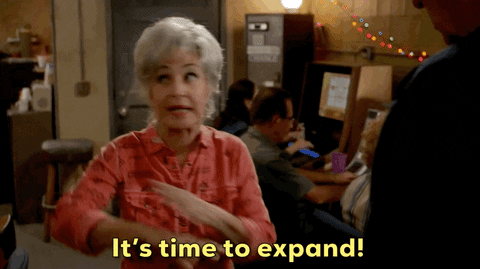
1.) Space Needed
When determining your locations, the first question you should ask is: “How much warehouse space do I need?” Or, if you’re an ecommerce brand in the know that is trying to grow like we just discussed, the more accurate question is: “How many fulfillment centers should I keep my inventory in?” That, boys and girls, is the better question, and one we can answer in great detail.
The physical space you need to hold your inventory is first and foremost based on your total SKU count. Past that, keep in mind that your exact stock requirements can change depending on supply-and-demand factors like seasonality, promotions, and so on. You also have to consider reorder points and supply chain timeframes, for example how long it takes to restock from a manufacturer.
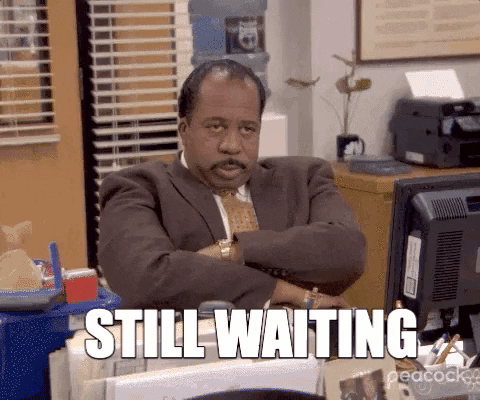
At the end of the day, every ecommerce brand owner has to be careful when deciding how to spread out inventory because while you’d like to have your products as close to customers as possible, you also don’t want to waste space or dollars where you don’t need to. Our 3PL cares about helping you maximize your business strategy, so we advise that you consider the below factors when determining your space needs. For full details on these areas, definitely check out our in-depth 3PL article as well!
- SKUs
- Historical Data
- Top-Performing Products
- Safety Stock
- Customer Demographics
- Returns, Mishaps, and More
- Supply Chain
- Cost
2.) Customer Demographics
When you’re an ecommerce brand, your customers can come from anywhere and everywhere. On any given day an order could come in from Massachusetts to Morocco to everything in between. That being said, it is important to track your order analytics to determine where stronger groupings of customers are coming from so you can strategically locate your inventory in fulfillment centers closer to those segments.
For example, if your highest percentage of clients is on the east coast of the United States, ShipMonk’s New Jersey, New York, or Florida facilities may be the best fit. If you are closer to the midwest, perhaps consider placing inventory in our Kentucky or Texas locations. Do you have a lot of orders coming in from the west coast? Our California and Nevada fulfillment centers could bring your products so much closer to your customers. And if your customers are distributed all over the United States, utilizing at least one fulfillment center in each region could be the best solution. You would just want to work with your fulfillment center to identify availability and recommendations based on performance analysis.

The point is the less your packages have to travel (from fulfillment center to end customer), the less expensive your shipping costs will be. By bringing your inventory closer to regions where greater numbers of orders are occurring, you’ll lower transit time. This leads to savings on shipping, and more opportunities to offer fast shipping options that customers love. Some questions to consider when evaluating your analytics to determine your key customer demographics are:
A.) Where are the highest concentrated numbers of orders being shipped to daily, weekly, monthly, and annually?
B.) What is the average transit time to the regions you’re shipping to?
C.) What regions have the most returns?
D.) What regions have the most repeat customers?
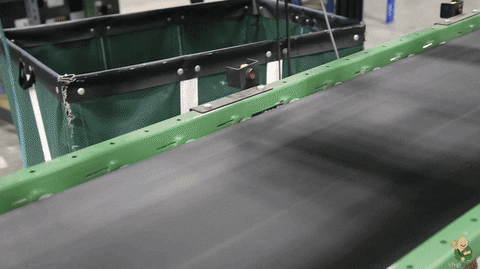
3.) Shipping Zones
Shipping carriers like FedEx, UPS, USPS, and DHL offer ecommerce brands and 3PLs an assortment of services and rates. While the latter generally gets better rates because of all the business we give to shipping carriers, there are other factors that determine how much it costs to ship a package from Point A to Point B. One major contributor to how much a shipping carrier charges is shipping zones. These zones are grouped not by miles, but by the zip codes spanning from the point of origin (where the ecommerce order is shipped out) to the point of destination (the end customer).
Shipping carriers look at zones to determine distance traveled, which corresponds to an approximate number of days from when the package is shipped to when it arrives at your customer’s door. Accordingly, two packages going to the same destination, but coming from two unique origin points, could have completely different shipping costs and times because they are traveling through different zones to reach that customer.
Taking a ShipMonk example, (where Zone 1 is closest to you and Zone 8 is farthest from you) if you’re shipping from Los Angeles to St. Louis, you’re shipping to Zone 7. But if you’re shipping from Dallas to St. Louis, you’re shipping to Zone 4.
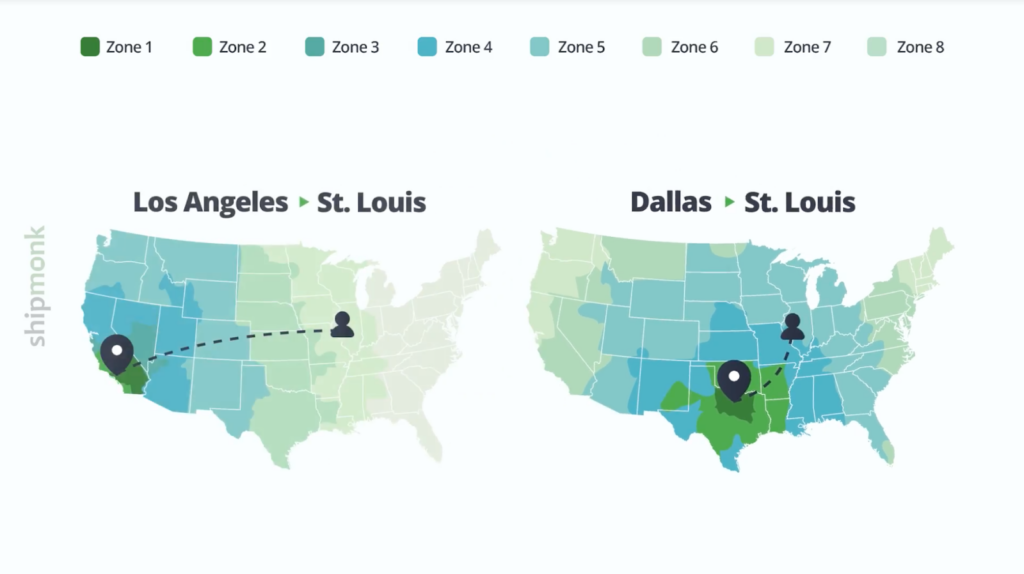
The United States is broken down into Zones 1 – 8 for domestic shipments. You, as an ecommerce brand owner, don’t need to constantly pay more to ship your items to customers based on zone travel. To avoid that, you’ll want to choose fulfillment center locations that minimize the zones orders travel through, taking into consideration your customer demographics (i.e. where strong clusters of orders are coming from).
ShipMonk Maximizes Shipping Zones to Save Time and Money
The fewer zones a package has to “cross” before reaching its final destination, the better. Using multiple fulfillment center locations is the best way to minimize shipping zones, thus reducing the cost of how far each package has to travel. ShipMonk appreciates this concept, and we’ve strategized our diverse fulfillment center footprint around it. We have widely spread out fulfillment center locations across the US, located in:
- Florida (our tech-driven 3PL Headquarters)
- New York
- New Jersey
- Kentucky
- Pennsylvania
- Nevada
- California
- Texas (our newest state-of-the-art US facility)

You can strategically leverage your inventory by splitting it across any number of our diverse, but equally efficient locations to reach key customer demographics in a timely and cost-effective manner. Our proprietary 3PL software will automatically assign orders to the locations within your network that minimize shipping zones and offer the best shipping rates for your destinations. And if anything changes at the drop of a hat (as supply chains can be unpredictable), our custom Virtual Carrier Network will adapt to ensure you are always getting the best shipping rate and speed solutions.
You don’t have to stop maximizing your shipping zone efficiency there. Because the next factor we’re going to cover for wisely selecting fulfillment center locations is how you want to expand your ecommerce brand across the world.

4.) Expanding Internationally
“We base business decisions on how we can enhance our platform so it provides our clients with opportunities for continued success and growth,” said Jan Bednar, ShipMonk’s founder and CEO. “Expanding our footprint globally not only widens the scale of our operations and diversifies resources, it enables our clients to scale to new geographies seamlessly.”
If you intend to grow your ecommerce brand internationally, it’s important to put inventory in international fulfillment centers to minimize shipping costs and maximize shipping speed. Selling internationally can be very expensive and overwhelming for ecommerce brand owners otherwise, as slower shipping times and complex tariffs/customs can delay products from reaching customers; meanwhile the cost of taking your goods from one country to the next adds up. That’s where working with a 3PL like ShipMonk comes in handy, allowing you to stay competitive and profitable.

ShipMonk, like the ecommerce brands we partner with, has a future-forward mindset. We are always innovating and striving to grow, scale, and increase our 3PL offerings so our clients can do the same. Part of that means expanding internationally. ShipMonk has extended its fulfillment center footprint across the globe to include a full range of locations across the United States, Canada, Mexico, and now Europe. How does that help your business? By locating our fully-integrated fulfillment centers in strategic logistics hubs, international ecommerce brands can:
A.) Widen their customer base and get a chance to penetrate new markets.
B.) Achieve domestic-like shipping rates and 2 – 5 day domestic delivery times, which lead to increased conversion rates and superior customer experience.
C.) Eliminate customs clearances while providing exceptional margin savings and rapid shipping windows that compete with companies abroad.
Overall, ShipMonk’s ecommerce brands leverage our fully-integrated international facilities to stay competitive by expanding their market, improving margins, and driving down operational costs all while meeting customer demand quickly.
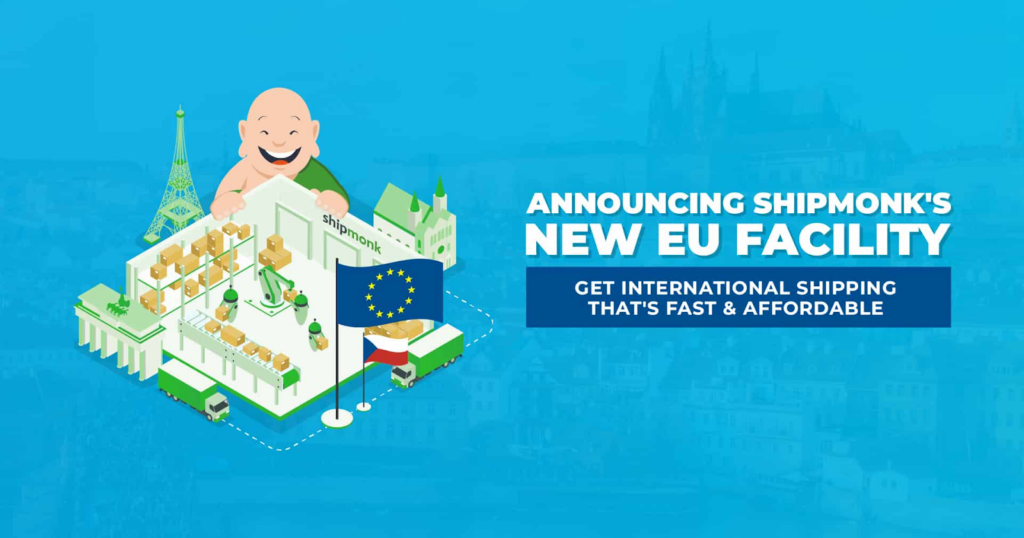
5.) Elevating Your Shipping Options
Today we tend to live in a gotta-have-it-now environment. As an ecommerce brand, how rapidly your goods reach customers can help them decide whether they should make a purchase from you or a competitor. As such, expedited delivery options are seen as a value add-on to shoppers. And the happy medium between ground shipping that is inexpensive but slower vs. overnight shipping that can significantly impact your bottom line is often 2-Day shipping. This speedy shipping option:
- Keeps you competitive with other brands
- Reduces cart abandonment
- Increases customers satisfaction and loyalty
- Entices buyers to come back
- Expands your seller talking points
Taking all that into account, when figuring out which fulfillment centers to use for your inventory you’ll want to ensure that those locations are close enough to customers to allow an affordable, expedited shipping option, like 2-day. If you find that balance of locations, it is a golden way to simultaneously please shoppers and profit margins.

6.) Type of Product
Adding to this argument, keep in mind that while ecommerce brands that make unique or specialty products may be able to get away with higher transit times, if you sell staple products (items that can be purchased easily in person or from other online sellers) consumers will be far less forgiving with shipping delays and costs. On the same page, products that expire or require special handling also need shorter shipping time frames. And anything that can be qualified in the “Gifts” category should be able to reach buyers fast and frugally too, otherwise they could go looking for other vendors.
These are just a few examples, but in general you want to make sure that if you’re investing in speedy shipping options, like 2-day shipping, the fulfillment center locations you’ve picked make sense for what your business offers. Bonus example to think on: if your ecommerce brand sells heavy winter coats, it may make more sense to store your inventory in the Northern United States or Canada; meanwhile a surfboard seller would probably want to put inventory in fulfillment centers close to the coast.

7.) Compare with Competitors
One of the best ways to conquer the outside world is to master the internal one. When deciding on your fulfillment center locations, do a SWOT Analysis (Strengths, Weaknesses, Opportunities, Threats) of your ecommerce brand’s top competitors. From there, utilize that information to see how you can keep up or surpass their offerings. As noted above, shipping times and speeds are key to customer satisfaction.
With that in mind, research the shipping options your competitors offer in assorted regions and from that ascertain if you are either losing or winning. For example, if it takes you 7 – 10 days to deliver orders to Texas and it only takes a competitor 1 to 3 days, that is a threat to your brand. Similarly, if a competitor is offering free shipping to a certain region and you are charging because it costs you more to transport an order that far, then you also have a problem. Both these kinds of scenarios come with the same solution. Top your competitors’ shipping in terms of cost and speed by placing inventory in fulfillment centers closer to key customer bases. Then there is no comparison!

Benefits of Multiple Fulfillment Center Locations
From keeping up with competitors to wisely working shipping zones to distributing your inventory with a growth focused mindset, choosing fulfillment center locations is a critical component of operations that must be handled with care. At the end of the day, it all comes down to saving time, saving money, and saving face.
Ecommerce brands that store inventory in multiple locations benefit from keeping products closer to customers, which reduces transit times and thus saves you money on shipping with every order. This is especially impactful if your brand offers any form of free shipping, which takes money out of your pocket with every sale. And if you do not currently offer free shipping, which can be a negative point in the war with competitors, strategic fulfillment center locations may reduce your costs enough to be able to either lower your shipping rates or start offering free shipping.

ShipMonk is the 3PL partner that can help you achieve your growth goals and stay competitive. The future of ecommerce is always prioritizing fast fulfillment and delivery. Our wide range of worldwide fulfillment centers allows ecommerce brands to easily prioritize that too while maintaining industry leading accuracy and inventory control thanks to our advanced 3PL software.
If you have further questions, our team is available to help you determine which fulfillment center locations would be best for your ecommerce brand’s current activity and long-term plans for the future. Contact us today to learn more about our 12 state-of-the-art fulfillment centers and how they can fit your growth goals!
